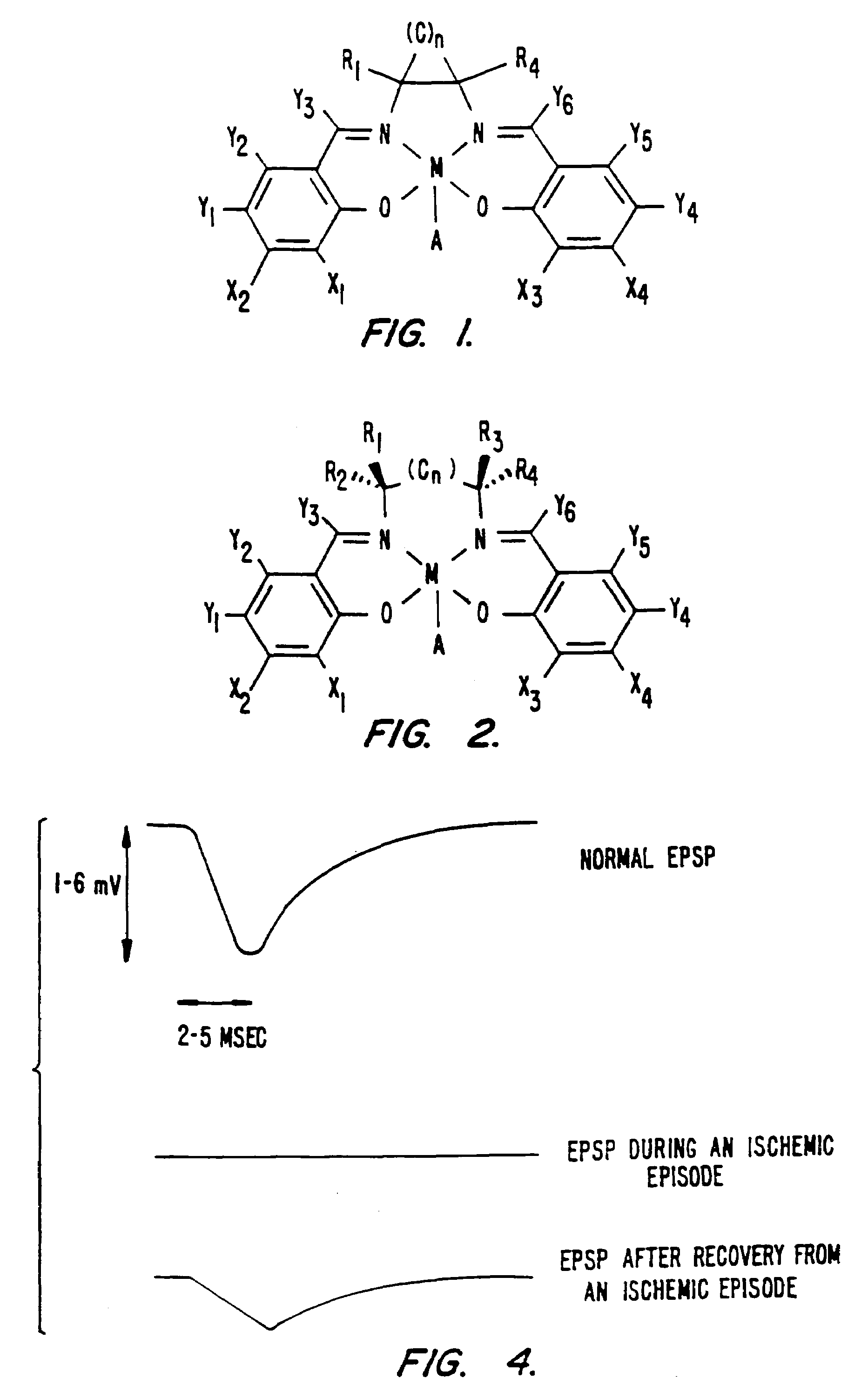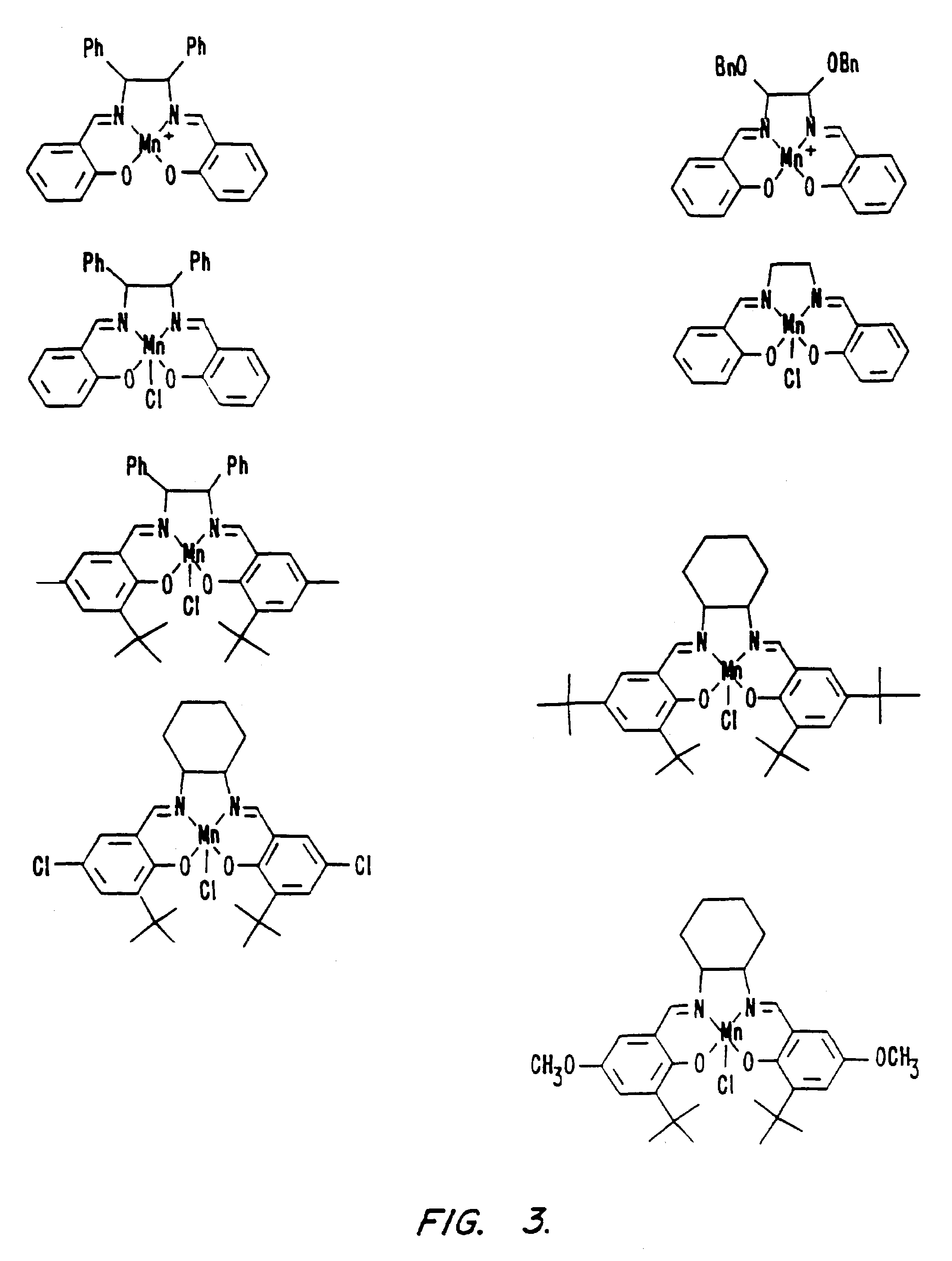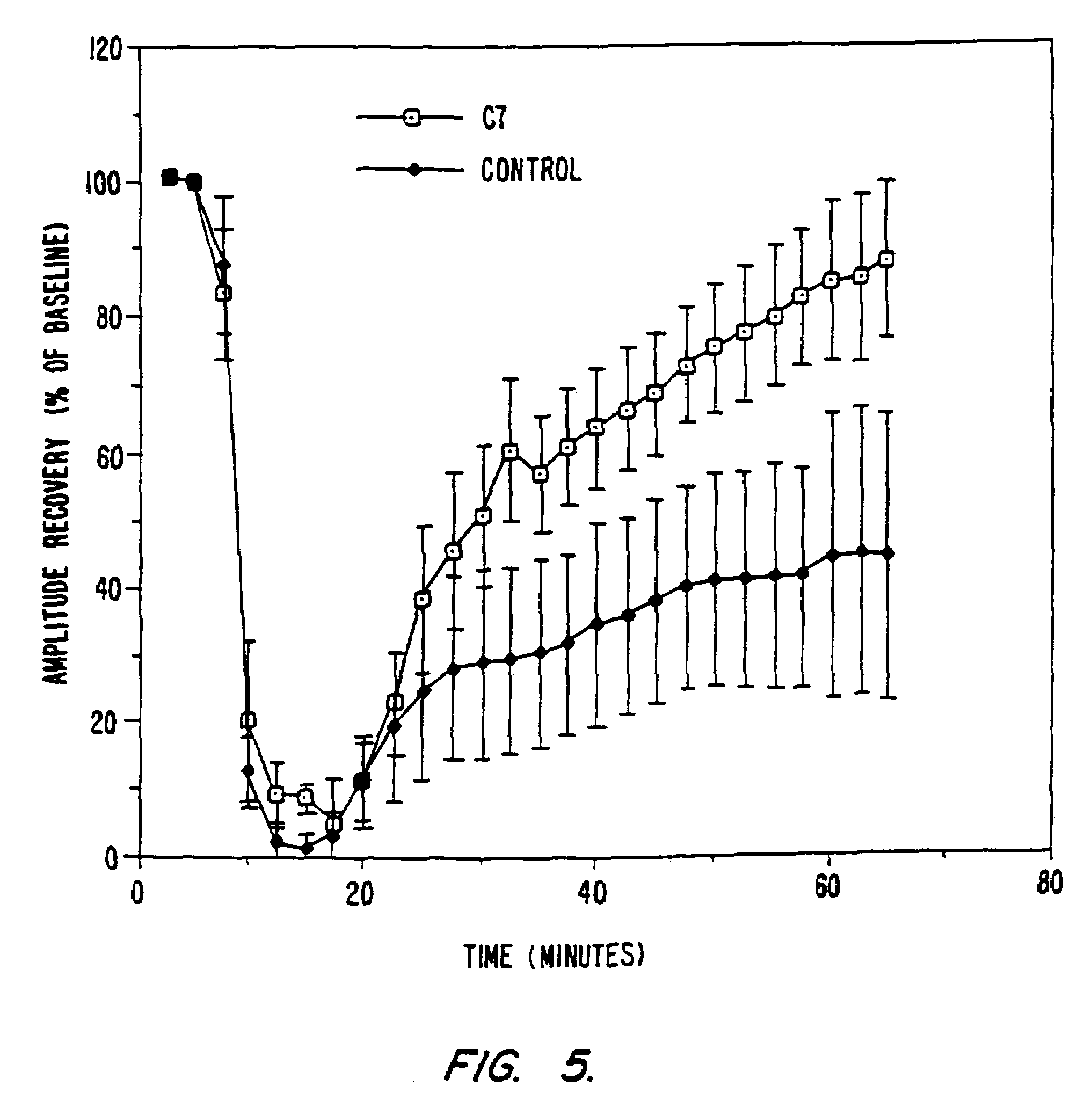Synthetic catalytic free radical scavengers useful as antioxidants for prevention and therapy of disease
a free radical scavenger and catalytic technology, applied in the field of synthetic catalytic free radical scavengers useful as antioxidants for prevention and treatment of diseases, can solve the problems of cellular death, unstable free radicals, and short half-lives of free radicals, and achieve the effects of reducing the rate of oxidative decomposition of foodstuffs, and preventing food spoilage and oxidation
- Summary
- Abstract
- Description
- Claims
- Application Information
AI Technical Summary
Benefits of technology
Problems solved by technology
Method used
Image
Examples
experimental examples
Example 1
In Vitro Catalytic Activities
[0227]The antioxidant catalytic activities of the C1, C4, C6, C7, C9, C10, C11, and C12 salen-Mn complexes (see FIG. 3) was determined; superoxide dismutase and catalase activities were determined according to the following method.
[0228]The SOD activity of the compounds was determined by evaluating the inhibition of the reduction of cytochrome C produced by the oxygen free radical generating system, xanthine plus xanthine oxidase. Cytochrome C reduction is monitored spectrophotometrically at 550 nm according to the method described in Darr et al. (1987) Arch. Biochem. Biophys. 258: 351, incorporated herein by reference. The concentration of xanthine oxidase is adjusted such that it produces a rate of reduction of cytochrome C at 550 nm of 0.025 absorbance unit per minute. Under these conditions, the amount of SOD activity required to inhibit the rate of cytochrome C reduction by 50 percent (i.e., to a rate of 0.0125 absorbance unit per minu...
example 2
Salen-Metals as SOD / Catalase / Peroxidase Mimetics Overview
[0281]Synthetic catalytic scavengers of reactive oxygen species (ROS) may have clinical value in alleviating tissue damage associated with numerous acute and chronic diseases. Example 1 demonstrates that synthetic salen manganese complexes have superoxide dismutase (SOD) activity. One of these compounds, C7, has been found to be protective in several models for ROS-associated tissue injury. In this example, the catalytic properties of C7, in particular, are further characterized demonstrating that it also utilizes hydrogen peroxide as a substrate, exhibiting both catalase and peroxidase activities. Furthermore, the synthesis of a new series of salen manganese complexes that are analogs of C7 are described and their multiple catalytic activities summarized. All of these compounds showed SOD activities comparable or identical to that of C7. Many of the compounds, like C7, also function as catalases and peroxidases. In contrast t...
example 3
Topical Formulations
[0334]Antioxidant salen-metal complexes are formulated according to the following protocols:
[0335]All percentages and ratios herein are by weight, unless otherwise specified.
[0336]A moisturizing lotion is prepared by combining the following components utilizing conventional mixing techniques.
[0337]
Percent by WeightComponentsof CompositionWater (purified)70.94 Carbomer viscosity control agents0.23(commercially available in the Acritamerseries from R.I.T.A. Corp.)Alkyl Parabens0.90Glycerin3.50Potassium Hydroxide0.09-0.15Cetyl Alcohol1.25Stearic Acid0.75Glyceryl Stearate0.63Polyoxyethylene Stearyl Alcohol1.75(commercially available in the Brijseries from ICI Americas, Inc.)Coco-Caprylate / caprate2.00C12-C15 Alcohol Benzoate (Finsolv TN-2.00commercially available from Finetex, Inc.)Salen-metal compound C72.00Octyl Methoxycinnamate7.50Benzophenone-31.00Octyl Dimethyl PABA1.00Dimethicone0.30Imidazolidinyl Urea0.10Ethylene Acrylate Copolymer3.80Tyrosine0.10
[0338]This lot...
PUM
| Property | Measurement | Unit |
|---|---|---|
| volumes | aaaaa | aaaaa |
| weight | aaaaa | aaaaa |
| pH | aaaaa | aaaaa |
Abstract
Description
Claims
Application Information
 Login to View More
Login to View More - R&D
- Intellectual Property
- Life Sciences
- Materials
- Tech Scout
- Unparalleled Data Quality
- Higher Quality Content
- 60% Fewer Hallucinations
Browse by: Latest US Patents, China's latest patents, Technical Efficacy Thesaurus, Application Domain, Technology Topic, Popular Technical Reports.
© 2025 PatSnap. All rights reserved.Legal|Privacy policy|Modern Slavery Act Transparency Statement|Sitemap|About US| Contact US: help@patsnap.com



